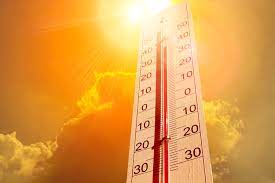Exposure To Heat
Published .
It’s usually the same people that get heat illnesses

Patients who are exposed to extreme heat or work in hot environments may be at risk of heat stress. Exposure to extreme heat can result in occupational illnesses and injuries. Heat stress can result in heat stroke, heat exhaustion, heat cramps, or heat rashes. Heat can also increase the risk of injuries in patients as it may result in sweaty palms, fogged-up safety glasses, and dizziness.
Extremes of age (infants/toddlers and the elderly) are at risk of sustaining a heat related illness. Infants and toddlers are risk for heat illness due to their larger body mass to surface area ratio. In other words, for their body mass, they would need more skin to cool the body (one of the functions of skin). People at greater risk of heat stress include those who are 65 years of age or older, are overweight, have heart disease or high blood pressure, or take medications that may be affected by extreme heat. Elderly patients often have paper thin skin and inefficient sweat glands.

The human body is quite adaptable when it comes to compensating for temperature. This can be seen by the fact that humans live nearly everywhere on earth, and the surface temperature on earth is inconsistent. Higher ambient temperatures reduces the body’s ability to lose heat by radiation. High relative humidity reduces the body’s ability to cool itself by evaporation. When people exercise or work outside, the body can lose more than 1 liter of sweat per hour. Various medical conditions can increase the likelihood of developing a heat related illness. People at risk of heat stress include outdoor workers and workers in hot environments such as firefighters, bakery workers, farmers, construction workers, miners, boiler room workers, factory workers, and others. Various medications (prescribed or otherwise) can lead to heat illness as well.
Assessment and management of heat injuries
The first clue is the weather. Obviously, heat injuries will primarily happen in the summer months. In fact, it may be likely that during the summer, many EMS calls are influenced by the hot temperature. Initial management should be guided by the primary survey. The following signs and symptoms should shift the index of suspicion towards a heat injury:
- Muscular cramps
- Weakness or exhaustion
- Sweating or history of sweating with dry skin
- Dizziness or faintness
- Rapid heart rate
- Altered mental status
- Unresponsive
The first intervention is to remove the patient from the hot environment and remove any unnecessary clothing. Placing the patient in the back of an air conditioned ambulances (ambulances often have great air conditioning systems). Other measures such as fanning, cool cloths, or ice packs (not directly touching the skin) placed in the armpits and groin. If the patient is unresponsive, place the patient in the recovery position
